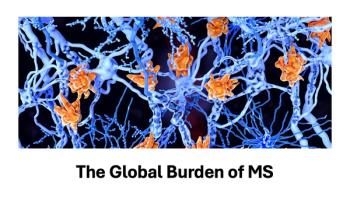
Four things executives need to know to combat rising drug spend
Executives need to ask themselves four key questions to mitigate the negative impact of rising drug costs.
In today’s healthcare landscape, few things better define the role of a managed healthcare executive than managing the industry’s constant changes. This year, the rapid growth in drug spend has proven to be among the most challenging of these changes, and experts expect the trend to continue into 2017. More than ever before, healthcare executives must set their sights squarely on understanding and developing strategies to mitigate the potentially devastating impact of rising drug costs on their organizations and their patients. To succeed in this effort, leaders must consider the following key questions.
1. What’s driving the rise in drug costs?
Drug spend has risen steadily over the past 50 years, but in recent history, it has spiked dramatically. According to the Bureau of Labor Statistics’ Producer Price Index, the average price of pharmaceuticals rose nearly 6%-well above the current U.S. inflation rate of 1%-in 2015. Specialty drugs, often used to treat chronic or complex health conditions, were the primary culprit, accounting for 73% of increased U.S. spending on medications; however, the prices of generic drugs, which typically decrease over time, also rose, according to IMS Health. While there’s little debate that these price increases will compound in the coming years, there are some competing thoughts as to why. In truth, it’s likely a combination of many factors, including:
· Growth of polypharmacy: People are taking more individual medications than they have in the past. Nearly
· Lack of regulation: Many people believe the U.S. drug cost trend could be easily reversed with stricter regulation of pharmaceutical prices, pointing to countries that have price controls and average patent medication prices at 18% to 67% below U.S. standards. Others have proposed solutions, such as streamlining the process for FDA approval of new medications, hoping that pharmaceutical companies would pass on the resulting savings.
· Long patent periods: U.S. patents have a relatively long life of 20 years, during which time new drugs enjoy virtual monopolies. What’s worse, not only do new drugs start off expensive, but studies show pharmaceutical companies also increase their prices by 5% per year on average in an attempt to recoup the high cost of bringing a new drug to market. Manufacturers have also been criticized for “evergreening,” or marginally changing a product to secure a new patent without improving its therapeutic benefit.
· Limited pharmaceutical competition: Competition in the pharmaceutical industry has declined in recent years, reducing the drug supply, which, as basic economics suggests, has the necessary impact of increasing prices. This lack of competition has been driven by mass consolidation, as well as by some manufacturers’ decision to exit the market due to rising production costs. In some cases, these companies were one of only a few to produce a given drug, leaving a de facto monopoly in their absence.
· Mergers and acquisitions (M&A): The correlation between rising drug costs and increased pharmaceutical M&A is hard to ignore. In 2015, there were a record 168 pharmaceutical acquisitions with 30 of those exceeding $1 billion, according to
· Research and development (R&D): The pharmaceutical industry has long argued that it’s the high cost of R&D that primarily drives drug costs. Critics, however, say that academic researchers-subsidized by federal National Institutes of Health (NIH) funding-are often spearheading this effort and then selling their discoveries to major pharmaceutical companies for mutual profit. In fact, research suggests that every $10 million boost in NIH funding leads to an increase of 2.3 patents, according to the
· Consumer advertising: According to
2. Who’s affected?
Most healthcare executives are acutely aware of the impact of rising drug costs, which have, in many cases, significantly drained revenue, on their bottom line, but some may be surprised to learn of the far-reaching impacts on patients and long-term hospital health.
For example, rising drug costs have disproportionately affected people with rare and chronic diseases or those who take specialty drugs. This is because supply is tight (artificially so, according to some critics) and there’s virtually no limit on what desperate patients and their insurers will pay for these life-saving drugs. For example, the two most expensive drugs in the U.S., Sovaldi and Harvoni, both designed to treat hepatitis C, a contagious liver disease, are said to cost $81,000 and $79,200 per month, respectively A recent
3. What is the industry doing about rising drug costs?
In many states, industry and patient advocates have successfully lobbied for regulation to combat rising drug costs. Eight have introduced “drug price transparency bills” to gain insight into the cost of manufacturing drugs. For example, Vermont’s state legislature passed a bill earlier this year to require pharmaceutical companies to justify price increases. Concerned groups in California have proposed legislation that would require drug manufacturers to give public notice prior to hiking drug prices, and in November, residents will vote to allow the state, which provides coverage to vulnerable groups, such as the poor, inmates, and government retirees, to pay the same price as the Veterans Affairs, an agency with substantial negotiating power, for drugs, according to the
Understandably, drugmakers are pushing back on such regulations. Time will tell how, if passed, they’ll affect drug prices-or, as some would argue, create undue hardship for manufacturers-but many experts following the drug trend feel they’re a step in the right direction.
4. What can hospital executives do about rising drug costs in the near term?
In the absence of stricter regulation, many health executives have devised creative strategies to mitigate the financial impact of rising drug costs, including:
· Considering biosimilars. Biosimilars, or “the generics of biotechnology in the future,” have the same effect in the body as brand name biotechnology drugs, but sell for 30% to 50% less. The U.S. has already approved several agents for use, such as Zarxio and Granix, both cost-effective alternatives to Neupogen, a drug used to treat side effects from chemotherapy.
· Interdisciplinary collaboration. Sometimes, simple steps, like encouraging communication between physicians and pharmacists, can have a huge impact on the type and cost of drugs used. Pharmacists may counsel hospital staff on less costly alternatives, and education programs may discourage promotion of brand name drugs and expensive off-label use.
· Patient assistance programs. Hospital staff may also encourage patients to enroll in patient assistance programs, which are offered by drug companies, states and nonprofit groups and help people in need obtain free or low-cost medications. Not only do these programs promote better patient outcomes, but they may also save hospitals millions of dollars.
· Effective formulary management. The right pharmacy team may cut costs by strategically negotiating with manufacturers, striking high-cost medications from the formulary, and more. For example, in 2015, many hospitals decided to block physicians’ use of Isuprel, a common heart medication, after its price rose by more than 500%. It’s also important to review charge masters and J codes as changes occur daily and missing any of them may cause hospitals to lose out on critical reimbursements.
· Maximize hospital reimbursement. While not directly tied to drug costs, maximizing hospital reimbursement, where possible, may also help minimize their impact. As just one example, hospitals may work to improve their Hospital Consumer Assessment of Healthcare Providers and Systems (HCAHPS) scores by following up with patients to confirm satisfaction, analyzing data to identify areas of improvement, or educating patients throughout their hospital on discharge plans.
Rubin
Julie Rubin, PharmD, BCPS, is the director of clinical services for
Newsletter
Get the latest industry news, event updates, and more from Managed healthcare Executive.






















































